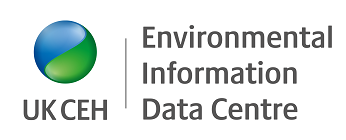This statement applies to content published on the eidc.ac.uk domain.
We want as many people as possible to be able to use and understand our website. Our accessibility commitment includes making sure that our website visitors can:
- easily understand our web pages by making the content as simple as possible
- zoom in up to 300% on a webpage without the text spilling off the screen
- navigate most of the website using just a keyboard
- navigate most of the website using speech recognition software
- listen to most of the website using a screen reader (including the most recent versions of JAWS, NVDA and VoiceOver).
How accessible this website is
We have endeavoured to make this website compliant with the Web Content Accessibility Guidelines version 2.1 AA. However, some parts of this website may have inconsistencies. For example:
- Some critical ARIA roles may be missing or incorrect
- Colour contrast may not be strong enough in some places
- Some images may lack alternative text
If you find any problems, please let us know by emailing info@eidc.ac.uk
What to do if you can’t access parts of this website
If you need information on this website in a different format, email info@eidc.ac.uk
Please include in your email the web address of the content (specific URL) and the format you need. For example:
- accessible PDF
- large print
- easy read version
- audio
- braille.
AbilityNet has advice on making your device easier to use if you have a disability.
Reporting accessibility problems with this website
We’re always looking to improve the accessibility of this website. If you find any problems that aren’t listed on this page, or think we’re not meeting accessibility requirements, email info@eidc.ac.uk
Disproportionate burden
In some cases, content may be embedded from third-party sources. We cannot control these elements as they are provided “as is” by the external service, so in such cases - where we cannot source an alternative, more accessible service - we are obliged to accept the mark-up provided.
Some of our PDFs and Microsoft Office documents may not meet accessibility standards. For example, they may not be marked up so they are accessible to a screen reader. These include historic documents.
What we’re doing to improve accessibility
In 2021, we asked Code Enigma to test the accessibility of the site for compliance with Web Content Accessibility Guidelines version 2.1 as part of an external auditing programme.
They used a sample of pages. These pages were selected by EIDC based on their importance and utilisation. We also included pages from our data catalogue that are as complete as possible, to ensure we capture all key page elements.
We re-tested the site in February 2025 using Microsoft’s Accessibility Insights for Web.
Preparation of this accessibility statement
This website was tested in July 2021 and February 2025.
This statement was prepared on 21st September 2021. It was last updated on 26th February 2025
